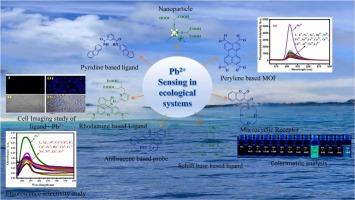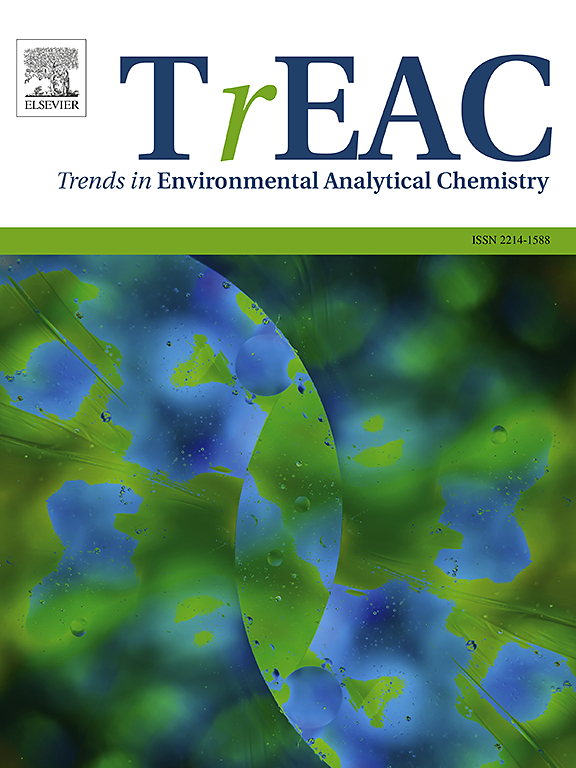Lead(II) sensing in biological and environmental systems: A decade (2015–2024) of fluorescent probe innovations and emerging trends
IF 13.4
2区 化学
Q1 CHEMISTRY, ANALYTICAL
引用次数: 0
Abstract
Lead (Pb²⁺) contamination in environmental and biological systems causes a significant risk to human health and ecosystems because of its high toxicity, persistence, and bioaccumulation potential. Even at trace levels, exposure to lead can result in severe neurological, developmental, and organ-related disorders. Hence, the development of highly sensitive and selective detection methods for Pb²⁺ is crucial. This review provides an overview of recent advancements in lead chromofluorogenic sensors (2015–2024), including Schiff bases, homocyclic and heterocyclic aromatic compounds, molecular organic frameworks (MOFs), macrocyclic ligands and nanomaterial-based approaches. The sensing mechanisms, detection limits, response times, and analytical applications in biological and environmental monitoring of the reviewed Pb2 + sensors have been discussed. Additionally, the challenges and future perspectives of Pb²⁺ sensing technologies are discussed to guide further research in this critical field.

生物和环境系统中的铅(II)传感:荧光探针创新和新兴趋势的十年(2015-2024)
铅(Pb 2 +)在环境和生物系统中的污染由于其高毒性、持久性和生物蓄积潜力,对人类健康和生态系统造成重大风险。即使是微量水平,接触铅也会导致严重的神经、发育和器官相关疾病。因此,开发高灵敏度和高选择性的pb2 +检测方法至关重要。本文综述了铅荧光传感器的最新进展(2015-2024),包括希夫碱、均环和杂环芳香族化合物、分子有机框架(MOFs)、大环配体和基于纳米材料的方法。综述了Pb2 +传感器的传感机制、检测限、响应时间以及在生物和环境监测中的分析应用。此外,还讨论了pb2 +传感技术的挑战和未来前景,以指导这一关键领域的进一步研究。
本文章由计算机程序翻译,如有差异,请以英文原文为准。
求助全文
约1分钟内获得全文
求助全文
来源期刊

Trends in Environmental Analytical Chemistry
Chemistry-Analytical Chemistry
CiteScore
21.20
自引率
2.70%
发文量
34
审稿时长
44 days
期刊介绍:
Trends in Environmental Analytical Chemistry is an authoritative journal that focuses on the dynamic field of environmental analytical chemistry. It aims to deliver concise yet insightful overviews of the latest advancements in this field. By acquiring high-quality chemical data and effectively interpreting it, we can deepen our understanding of the environment. TrEAC is committed to keeping up with the fast-paced nature of environmental analytical chemistry by providing timely coverage of innovative analytical methods used in studying environmentally relevant substances and addressing related issues.
 求助内容:
求助内容: 应助结果提醒方式:
应助结果提醒方式:


